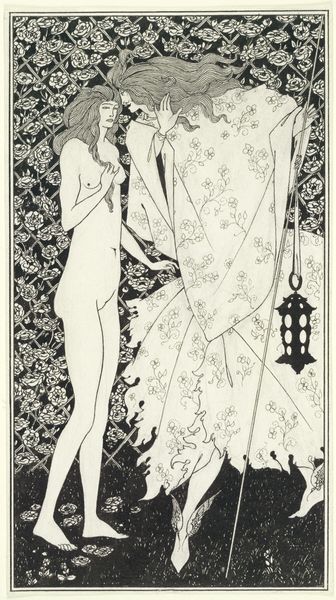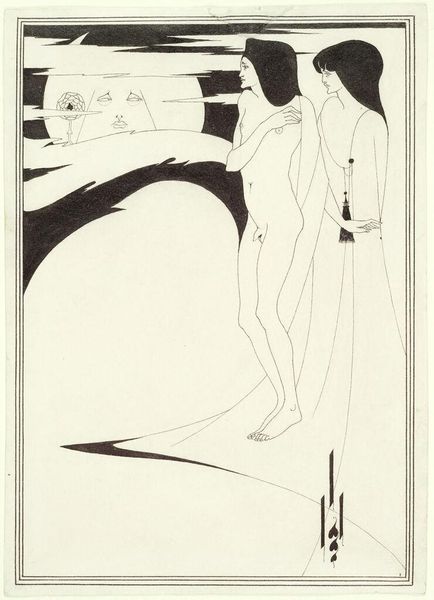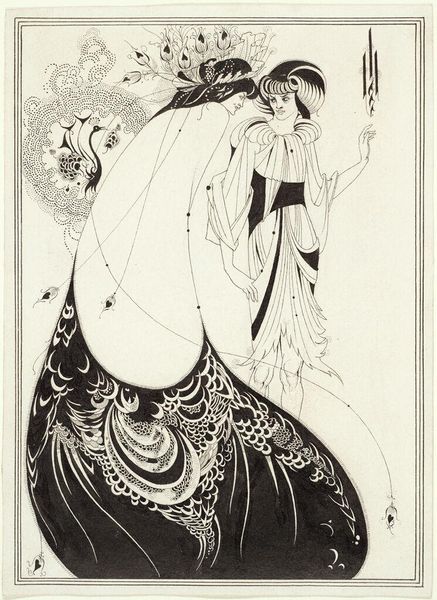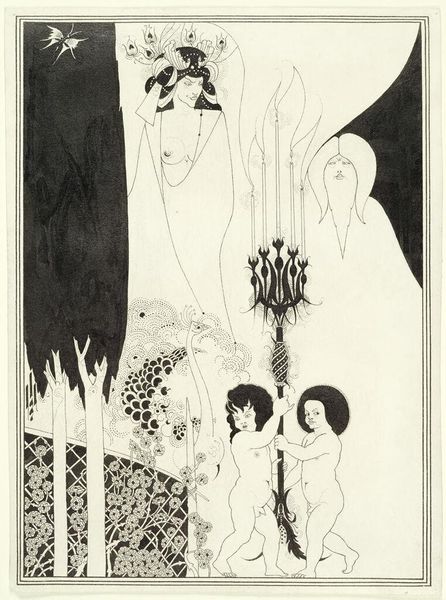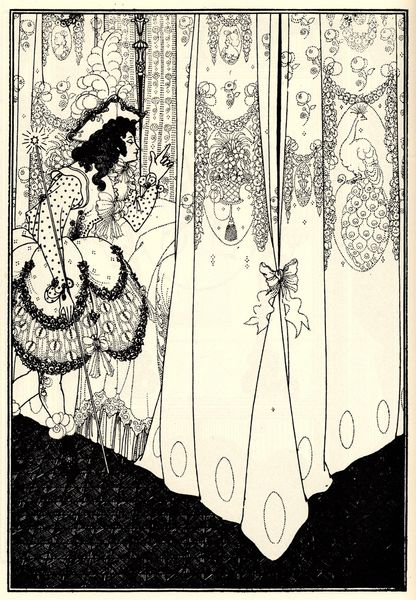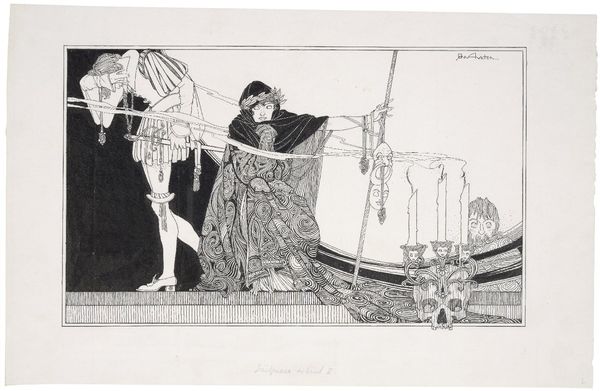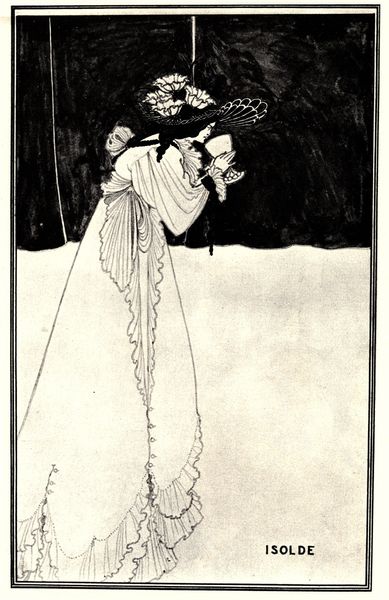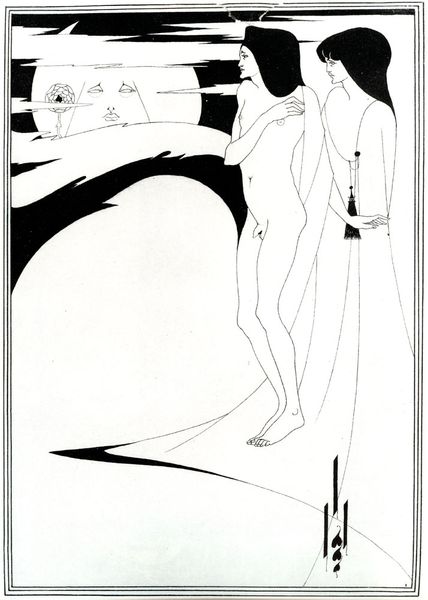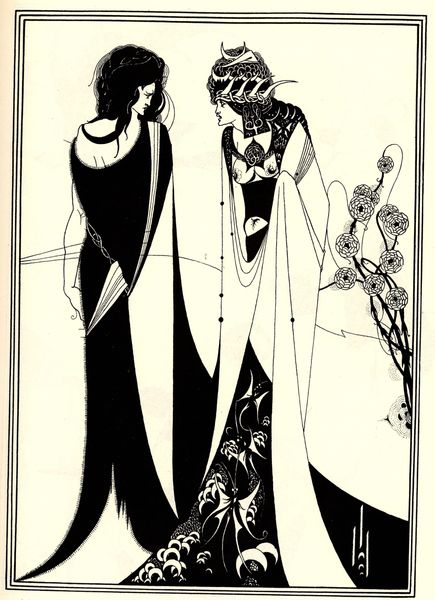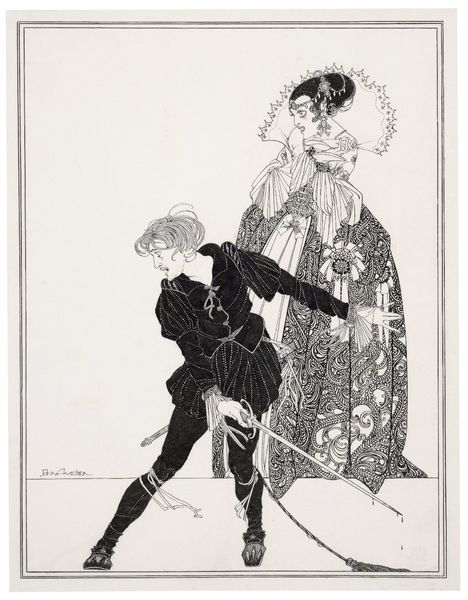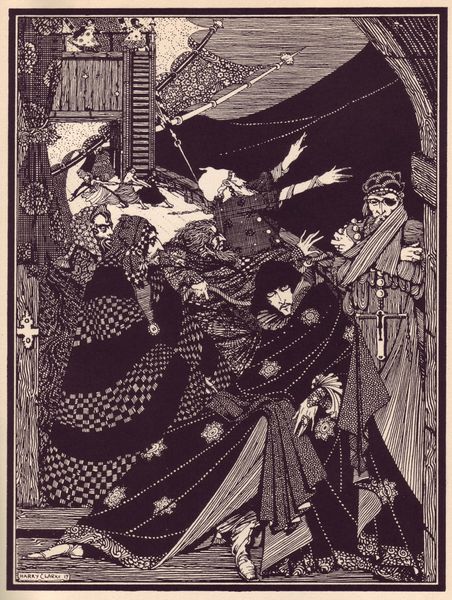
drawing, ink
#
portrait
#
drawing
#
figuration
#
ink
#
history-painting
Copyright: Public domain
Editor: So, this is a drawing by John Austen titled *Hamlet*, and it seems to be done in ink. The somber subject matter and the stark contrast between light and shadow give it a very intense, theatrical feel, don't you think? The young man looks a little…haunted. What jumps out at you when you see this piece? Curator: Haunted, yes! I get that immediately, and for me, it's the knowing glances of those theatrical masks that hold the keys. Consider, the layers, right? We've got the character Hamlet, shadowed by the performance of being Hamlet, by the art of Hamlet, and by the death innate in all theatre; a visual Russian doll of identity crisis! Editor: Masks and theatre, sure. I guess I was also focused on that skull – literally a memento mori. What does it all mean in this context? Curator: Oh, I think it is very cleverly done: this whole ink drawing meditates on performative mourning. Hamlet's grief, let's not forget, may not be genuine at all times – he uses it, he plays with it. Isn’t there a grand, terrible irony that an actor playing the prince playing the madman IS, here, closest to 'reality'? Editor: I didn't quite look at it that way, I see. A triple performance almost! But does the skull reduce the other dramatic devices of ‘performance’ that you mentioned? Curator: Reduction is possible, true, but I feel Austen wanted the audience to really drill down on a central theme to appreciate these more ornate, intellectual and theatrical layers of his composition! By doing so, do we have, therefore, permission to do likewise – a dramatic reading? Editor: Right! Looking closely does expose new avenues of appreciation. Thanks so much!
Comments
No comments
Be the first to comment and join the conversation on the ultimate creative platform.
